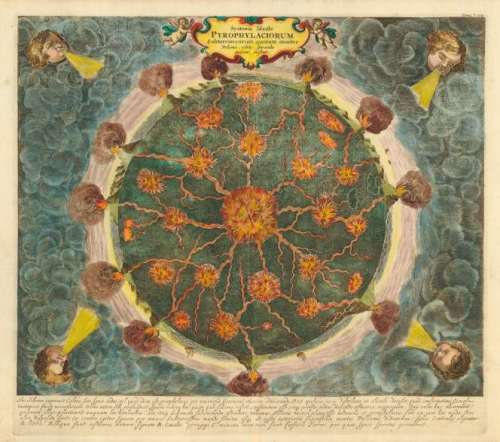Mostri e mirabilia naturae da Francis Bacon a Athanasius Kircher
DOI:
https://doi.org/10.54103/2240-9599/18221Abstract
This essay explores the history of the concept of monstrum from Francis Bacon’s Novum Organum to Athanasius Kircher’s Mundus Subterraneaus (1664), as well as its relationship with the origins of science; as in the early modern age, the term monstra is considered as a synonym for mirabilia naturae. The introductory part focuses on the difficult definition of “monster”, starting from Aristotle’s famous sentence in De generatione animalium: whoever does not looks like his parents, or whatever happens in a different way from the “generality of cases”, is included within the category of the “monstrous”. Monster is a being, whose anomaly represents a warning; therefore, monsters may be considered as signs, susceptible of an allegorical, moral and even political interpretation. In another acceptation of the term, monsters may be considered as the privileged witnesses of the richness and fecundity of nature. In the second part, Bacon’s theory of monsters is exposed: they are classified as instantiae deviantes, within that interpretation of nature, through which the Lord Chancellor lays the epistemological foundations of the modern science. In the third, fourth and fifth parts, a taxonomy of monsters is given: at first, by means of the cabinets des curiosités, which flourished in sixteenth and seventeenth century Italy, from Naples to Rome, from Bologna to Milan, with famous collectors such as Ferrante Imperato, Ulisse Aldrovandi, Manfredo Settala, Athanasius Kircher; then, through the “books of secrets”, which are at the same time a new, successful literary genre and a way of thinking nature, an aspect of natural history. Among the “professors of secrets”, there are Giovan Battista Della Porta, Ambroise Paré, Leonardo Fioravanti, Jean Fernel, Pierre Borel, Kenelm Digby, and Athanasius Kircher, again, with some disciples of his, such as Kaspar Schott. Secrets of nature and mirabilia naturae are finally compared: the classical list of mirabilia, from Pliny the Elder to Kircher, completes the taxonomy of monsters. The sixth and last part of this essay offers an explicative theory of monsters and prodigies: the marvels of nature are magnetic phenomena, which seem to imply a mysterious action at a distance. Such magnetic action can be accounted for on the basis of the Renaissance, Ficinian and Neoplatonic concept of spirit – conceived as the universal vehicle of occult sympathies and antipathies - and then through the seventeenth concepts of corpuscular effluvia, introduced by Pierre Gassendi in his Physica (1658), and sphaera activitatis, produced by the effluvia which each body emits, and surrounding it. This sphere is the place when most of marvelous phenomena happen.



